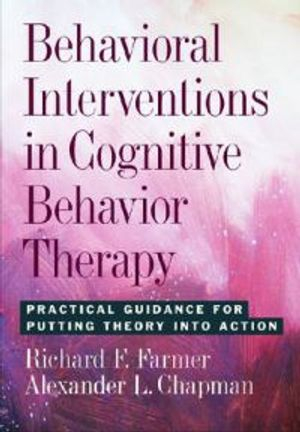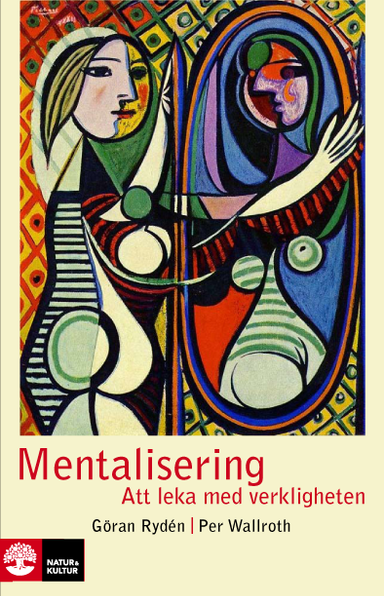

Behavioral Interventions in Cognitive Behavior Therapy Upplaga 1
- Upplaga: 1a upplagan
- Utgiven: 2008
- ISBN: 9781433802416
- Sidor: 342 st
- Förlag: American Psychological Association
- Format: Inbunden
- Språk: Engelska
Om boken
Cognitive behavior therapy (CBT) dominates lists of evidence-based treatments and is increasingly used by front-line clinicians. Behavioral methods, such as self-monitoring, behavioral activation, behavioral experiments, exposure therapy, and skills training, are core features of CBT. In fact, some studies suggest that these are among the primary active ingredients in CBT.In this detailed, step-by-step guide, Farmer and Chapman show readers how to put behavioral theory and science into action. They discuss case formulation and treatment planning, core behavioral intervention strategies, and innovative approaches, such as acceptance, mindfulness, and a behavioral approach to cognition. Flexible and useful across different client populations, the behavioral interventions described here leave room for therapists to be respectful of their clients' unique needs and individuality. Using case examples, the authors demonstrate how to generate case formulations, apply interventions, respond to common problems, navigate termination, and help clients to generalize treatment gains beyond therapy.The behavioral framework they describe is practical and accessible to clinicians and students with varying degrees of behavioral training.This is a practical guide to the most popular form of therapy used (shown to be effective with depression and many other disorders). It combines discussion of theory with detailed descriptions of therapeutic procedures and applications. It includes an extensive use of case studies. It provides a practical analysis of research results. It contains material useful across client populations and conditions. It is appropriate for grad students through seasoned clinicians.
Åtkomstkoder och digitalt tilläggsmaterial garanteras inte med begagnade böcker
Mer om Behavioral Interventions in Cognitive Behavior Therapy (2008)
I januari 2008 släpptes boken Behavioral Interventions in Cognitive Behavior Therapy skriven av Richard F Farmer, Alexander L Chapman. Det är den 1a upplagan av kursboken. Den är skriven på engelska och består av 342 sidor. Förlaget bakom boken är American Psychological Association.
Köp boken Behavioral Interventions in Cognitive Behavior Therapy på Studentapan och spara pengar.
Referera till Behavioral Interventions in Cognitive Behavior Therapy (Upplaga 1)
Harvard
Farmer, R. F. & Chapman, A. L. (2008). Behavioral Interventions in Cognitive Behavior Therapy. 1:a uppl. American Psychological Association.
Oxford
Farmer, Richard F & Chapman, Alexander L, Behavioral Interventions in Cognitive Behavior Therapy, 1 uppl. (American Psychological Association, 2008).
APA
Farmer, R. F., & Chapman, A. L. (2008). Behavioral Interventions in Cognitive Behavior Therapy (1:a uppl.). American Psychological Association.
Vancouver
Farmer RF, Chapman AL. Behavioral Interventions in Cognitive Behavior Therapy. 1:a uppl. American Psychological Association; 2008.



















